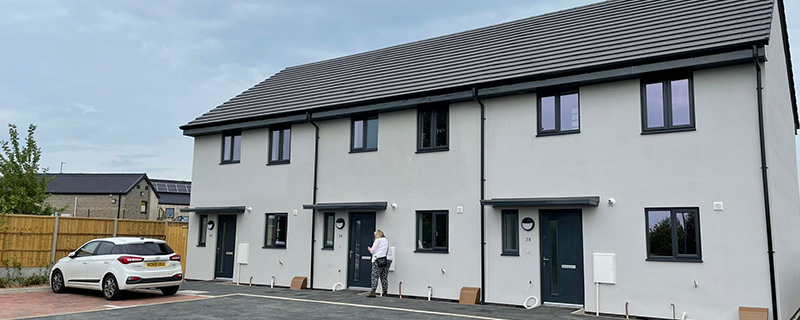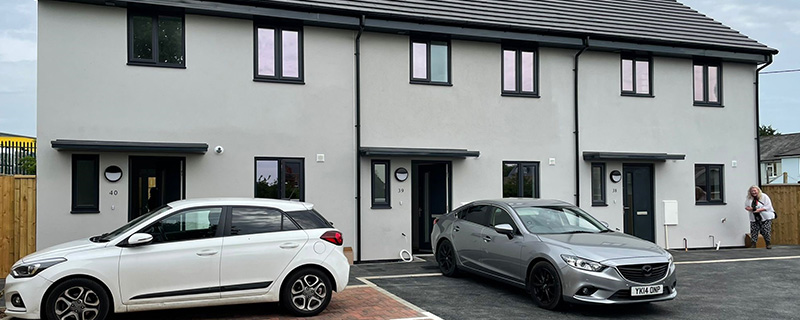The Benefits of MMC & Procurement Barriers to Adoption
The need for new housing has never been greater and with the Government aiming to deliver 300,000 new homes per year by mid-2020’s there needs to be a radical change in the way new homes are built. There’s some consensus around increasing housing supply to address the backlog of housing need, but there’s less agreement about how best to achieve it.
To tackle this, the Government have assembled an ‘MMC taskforce’, which aims to encourage the industry to use off-site construction methods and accelerate the roll out of much needed housing.
At CPC, we believe building MMC homes is the way to combating the housing crisis as well as reducing the impact on the environment, so we have made the decision not to renew our ‘traditional’ housing framework as a standalone product, but to incorporate a principal contractor workstream into the next edition of our Offsite Construction of New Homes framework.
The benefits of building MMC homes has long been recognised but the uptake still appears to be slow and cautious, but we are now starting to see it slowly grow in popularity.

So, what are the main benefits of MMC?
- SPEED
- MMC Projects can deliver time savings of between 10 to 50% of construction time which may mean opening early and the revenue benefits that brings or the ability to deliver a project within a specific time deadline.
- QUALITY
- It’s much easier to control the quality of the finished product when you have more meticulous processes and are carrying them out in a controlled, dry, easily accessible environment. Consequently, defects are reduced as they are captured at source, and the fit and finish is better.
- SUSTAINABILITY
- The use of MMC has a direct impact on the sustainability and carbon content of a project, both in construction and in use. This is down to more rigorous design processes, factory quality control, reduced waste, higher levels of air tightness and fewer transport loads.
- SAFETY
- Activities in an MMC process are more predictable with a consequential reduction in risk due to improved efficiency and productivity. Also, more site work is moved to the factory environment meaning a reduction or elimination of working at height. Better separation of personnel and vehicle movements and the ability to introduce mechanical assistance.
- REDUCED DISRUPTION
- Not only do MMC processes reduce the time required on-site, but as a direct side effect, there is less need for site space for car parking, welfare facilities and materials storage. This has a direct impact upon the locality with reduced traffic movements and less disturbance to the residents in the vicinity.

There are also several wider societal advantages to MMC including:
BETTER BUILDING PERFORMANCE
Through robust design processes and better-quality controlled processes mean that the performance of the building is more predictable and level of defects initially and longer term are lower. And through a fabric first approach, the cost benefits for the end user are substantial particularly in a world where gas and electric costs are through the roof and the cost for estate maintenance teams will be significantly lower.
IMPROVED SOCIAL VALUE
Whether it be through the fact that jobs in the factory environment are safer and more sustainable and offers employment opportunities to individuals with caring responsibilities or disabilities, there are multiple benefits to be obtained through the shift of work away from the construction site.
There are still some negative perceptions around offsite, and we must aim to debunk and demystify these perceptions to ensure the sector does not face barriers to increase adoption and is ultimately better educated moving forward.
We are all aware of the most common perceived barriers to adoption to MMC include the belief that MMC is a higher cost vs traditional, that schemes must be of a certain size to make them viable, and the uncertainty around quality of construction. But it is also likely that public procurement in the UK has been contributing to the blockage of MMC.
This was an area we were focused on, particularly as we are a procurement organisation, to look at how contracting authorities and procurement providers of frameworks and DPS’ can help overcome these barriers – ultimately to build affordable homes and combat the climate emergency.
SUPPLY CHAIN RESILIENCE
Poor supply chain resilience can affect profitability and fundability of projects. In this regard, a fairly big barrier to the take up of MMC is seen to relate to its lack of well-established supply chains.
Recognising this was a major issue, back in 2017 David Mosey developed and introduced the FAC-1, Framework Alliance Contract. The idea behind it is that it combines the features of a framework contract and an alliance contract to achieve a strategic and collaborative approach to procurement, connecting multiple projects, integrating team members, and improving value.
We believe that Supply Chain Resilience starts from having a collaborative approach and focus on “alliancing” and with the FAC1, this promotes an overarching theme which seeks to align objectives and interests. It promotes a “joined-up” approach to achieving supply chain resilience.
SPECIFICATIONS
Legally, when drafting specifications for the preferred solution, the contracting authority should not draft too narrowly or widely to rule out or unduly favour any potential workable solution which may meet its needs.
So not knowing how to draft specifications for a new type of solution – or to draft them wide enough so as not to inadvertently discriminate against that new type of solution, may have been a barrier against the adoption of MMC in public procurement.
The Construction Innovation hub identified “defining the need” as one of the biggest obstacles to the growth of MMC solutions.
This is now changing with the creation of frameworks and dynamic purchasing systems which public bodies can opt in and effectively provides them with ready-made solutions.
COST
The upfront costs are perceived to be generally a lot higher than vs traditional, but we have proved during a recent call-off combining pipelines and aggregating volume from 2 public sector clients that MMC is more cost effective than traditional.
The key was obviously the aggregation of volume to create a larger pipeline but also, we benefited from standard house types. And obviously, there are whole life cost benefits that MMC delivers for both the tenant and asset maintenance teams.
But generally, depending on how the evaluation process is carried out during a tender, modular solutions may find themselves at a disadvantage at the evaluation stage. Procuring authorities need to structure the cost evaluation through whole life running costs.
Procurement needs to move away from traditional, transactional, risk averse approaches to recognise the value in MMC.
Whole life costing is permitted under the Public Contract Regulations as a means of carrying out the financial appraisal of tenders.
And within the Government’s Procurement Green Paper, what used to be MEAT (Most economically advantageous Tender) should now be MAT (Most Advantageous Tender) which helps to eliminate the thought of cost being the most important factor when evaluating tenders.
INNOVATION
The imperative to innovate in construction has never been greater. Productivity and sustainability issues, including net zero carbon, need to be addressed and resilience designed into our buildings.
MMC exists to help facilitate this change, but business as usual procurement methods are a frequent barrier to its adoption, particularly for SME’s.
Too often, it is presumed that if common best practice is followed then the best outcome is achieved. The results are often compliant, inflexible ‘tried and tested’ procurement that leaves no room for innovation.
One of the changes that can be made to nurture innovation, deliver improved outcomes and removing barriers is by early supply chain involvement.
There is a lack of visibility for the offsite supply chain and this needs to be addressed and aligned with traditional existing prequalification tools in the construction industry.
And with the Government introducing the new Competitive Flexible procedure as outlined within their Green Paper, it means that contracting authorities can design their procedures to fit their procurement so will encourage innovation and allow them to engage with the market more effectively and proactively.
How can contracting authorities procure effectively to ensure they obtain the benefits of MMC, and tackle the climate crisis?
- Early Engagement with the supply chain.
- Collaboration, aggregation, standardisation, it works, and as mentioned earlier we have proved this has worked. These themes are also integral within the Constructing the Gold Standard report by Professor David Mosey.
- Innovation - procurement rules in the past have hindered contracting authorities to introduce innovation but that’s all changed. We at CPC have recently launched our Low Carbon Offsite Housing Dynamic Purchasing System, in conjunction with an innovative digital toolkit. With a developing, emerging market, we felt that a DPS was the way forward because of its flexibility in always being open for applications and would significantly help smaller companies who offer all types and categories of MMC get themselves in the public sector shop window more frequently than a traditional, more rigid, four year framework.
Come and talk to CPC today to see if our procurement solutions can help you reach your net zero and housing goals.


